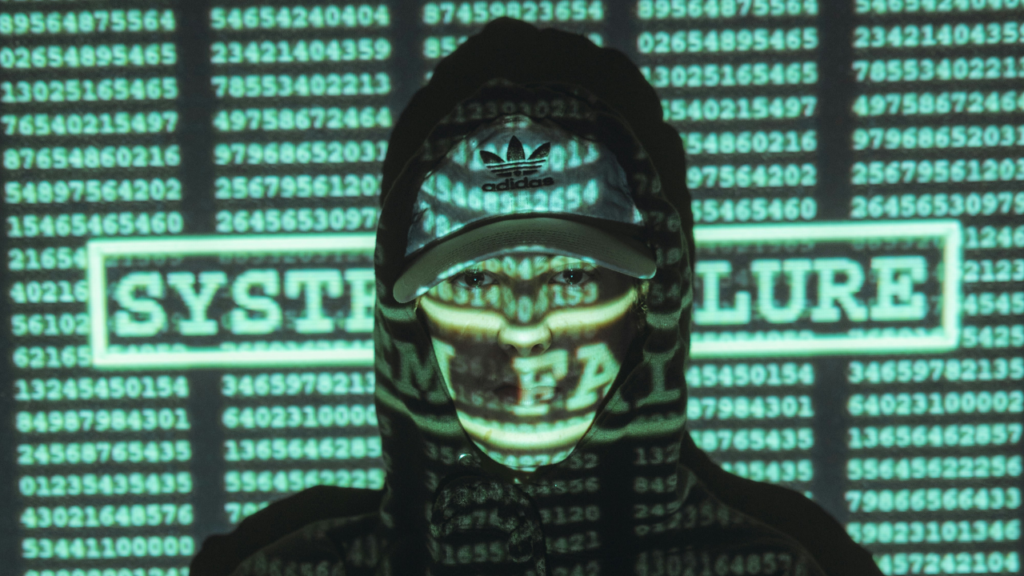Introduction
The rapid advancement of artificial intelligence (AI) is revolutionizing industries—including cybersecurity. While AI enhances threat detection and response, cybercriminals are also leveraging AI to launch sophisticated attacks. This dual-edged sword has created an ongoing arms race between attackers and defenders.
In this blog, we’ll explore:
- How cybercriminals use AI for malicious purposes
- How AI strengthens cybersecurity defenses
- Real-world examples of AI-powered cyber attacks
- Best practices for defending against AI-driven threats
- The future of AI in cybersecurity
Let’s dive in.
How Cybercriminals Use AI for Attacks
AI-powered cyber attacks are becoming more frequent and harder to detect. Here’s how hackers exploit AI:
1. AI-Generated Phishing & Social Engineering
Cybercriminals use AI tools like ChatGPT to craft highly convincing phishing emails, eliminating grammatical errors that typically reveal scams. AI can also mimic the writing styles of trusted contacts, making fraudulent messages appear legitimate.
Example: In 2023, a CEO fraud attack used AI-generated voice cloning to impersonate a company executive, tricking an employee into transferring $243,000. (Source: Forbes)
2. Automated Malware & Polymorphic Attacks
AI enables malware to adapt in real time, evading traditional antivirus software. Polymorphic malware changes its code with each infection, making signature-based detection ineffective.
3. Deepfake Cyber Threats
Deepfake technology manipulates audio and video to impersonate individuals. Attackers use deepfakes for:
- Fake video calls to authorize fraudulent transactions
- Spreading disinformation to manipulate stock markets or elections
4. AI-Driven Password Cracking
AI-powered brute force attacks can guess passwords faster by analyzing patterns from past breaches. Tools like PassGAN use generative adversarial networks (GANs) to crack passwords more efficiently.
5. AI-Enhanced DDoS Attacks
Attackers use AI to optimize Distributed Denial of Service (DDoS) attacks, identifying the weakest points in a network and adjusting attack vectors dynamically.
How AI Strengthens Cybersecurity Defense
While AI empowers attackers, it also provides powerful tools for defense:
1. AI-powered threat Detection
Machine learning (ML) algorithms analyze vast amounts of data to detect anomalies in real time. Unlike rule-based systems, AI identifies zero-day threats by recognizing unusual behavior.
Example: Darktrace’s AI detects insider threats by monitoring deviations in user activity. (Source: Darktrace)
2. Automated Incident Response
AI automates responses to cyber threats, reducing reaction time from hours to seconds. Systems like Palo Alto Networks’ Cortex XSOAR use AI to contain breaches before they escalate.
3. Behavioral Biometrics & Fraud Prevention
AI analyzes user behavior (typing speed, mouse movements) to detect imposters. Banks use this to prevent account takeovers.
4. Predictive Cybersecurity
AI predicts future attack vectors by analyzing past breaches and threat intelligence feeds. This helps organizations patch vulnerabilities proactively.
5. AI in Email Security
Tools like Microsoft’s Defender for Office 365 use AI to filter phishing emails with high accuracy, reducing human error.
Real-World Examples of AI Cyber Attacks
- The 2020 Twitter Bitcoin Scam
- Hackers used AI-generated tweets to impersonate Elon Musk and other celebrities, scamming users out of $120,000 in Bitcoin.
- Deepfake CEO Fraud (2023)
- A Hong Kong company lost $25 million after an AI-generated deepfake video call tricked employees.
- AI-powered ransomware (Conti, REvil)
- Ransomware groups now use AI to select high-value targets and optimize encryption methods.
Best Practices for Defending Against AI-Powered Attacks
- Adopt AI-Based Security Solutions
- Use tools like CrowdStrike Falcon, SentinelOne, or IBM Watson for AI-driven threat detection.
- Employee Training & Awareness
- Train staff to recognize AI-generated phishing attempts and deepfakes.
- Multi-Factor Authentication (MFA)
- MFA reduces the risk of AI-powered credential stuffing attacks.
- Regular Software Updates & Patch Management
- AI exploits unpatched vulnerabilities—keep systems updated.
- Monitor AI-Generated Content
- Deploy AI detection tools to identify deepfakes and synthetic media.
The Future of AI in Cybersecurity
As AI evolves, so will cyber threats. Key trends to watch:
- AI vs. AI Battles: Cybersecurity AI will constantly battle criminal AI in real time.
- Quantum AI Threats: Future quantum-powered AI could break encryption.
- Regulation & Ethical AI: Governments may impose stricter AI usage laws to curb cybercrime.
FAQs on AI-Powered Cyber Attacks & Defense
1. Can AI completely replace human cybersecurity experts?
No, AI enhances human efforts but cannot replace critical thinking and ethical decision-making in cybersecurity.
2. How can I tell if an email is AI-generated?
Look for overly generic language or unusual requests, or verify via a separate communication channel.
3. What’s the most dangerous AI cyber threat today?
Deepfake-based social engineering attacks exploit human trust effectively.
4. Are small businesses at risk from AI cyberattacks?
Yes, automated AI attacks target vulnerabilities indiscriminately—SMBs are often less protected.
5. Which industries are most vulnerable to AI cyberattacks?
Finance, healthcare, and critical infrastructure face the highest risks due to valuable data.
Conclusion
AI is transforming cybersecurity into a high-stakes game of cat and mouse. While attackers use AI for stealthy, adaptive threats, defenders leverage AI for real-time protection. Staying ahead requires continuous learning, advanced AI security tools, and employee awareness.
Is your organization prepared for the AI-driven cyber warfare of the future? Share your thoughts in the comments!







Hi, this is a comment.
To get started with moderating, editing, and deleting comments, please visit the Comments screen in the dashboard.
Commenter avatars come from Gravatar.